A blog by Secondary Mastery Specialist – Emma.
On our second day in our partner Shanghai Secondary School, we saw two lessons, one of them accompanied by members of the NCETM team, as well as teaching our own lesson.
Lesson 1
The first lesson was based on graphs of reciprocal functions. Students had already covered the basic learning points of the graphs and had completed homework on it. Our partner teacher Xiao was teaching this lesson. I was instantly surprised when I walked in to see that the students were seated in groups. He said that this was a new thing he was trying, as the focus now in Shanghai is discovery in lessons (a bit more about that later).
The students first recapped the previous lesson, drawing graphs and working together. Some students were just sketching the graphs and some were using a table of values. The ones using a table of values were easily more accurate, and seemingly a table of values was the instant thing students used if they weren’t sure, indicating this was obviously how they were taught the shape of the graph.
Xiao then projected some of the students homework on the board and he highlighted they key problems with each one. This linked directly to the recap of the key points of the lesson;
1. Infinite proximity to co-ordinate axis but not intersecting
2. Scale on the graph
3. Smooth curve through the points.
He then moved to getting students to fill in a generalised table, looking at the features of the positive and negative reciprocal graphs. Students then could have a go at answering what looked like complex questions, but with the table weren’t too difficult (See picture below).
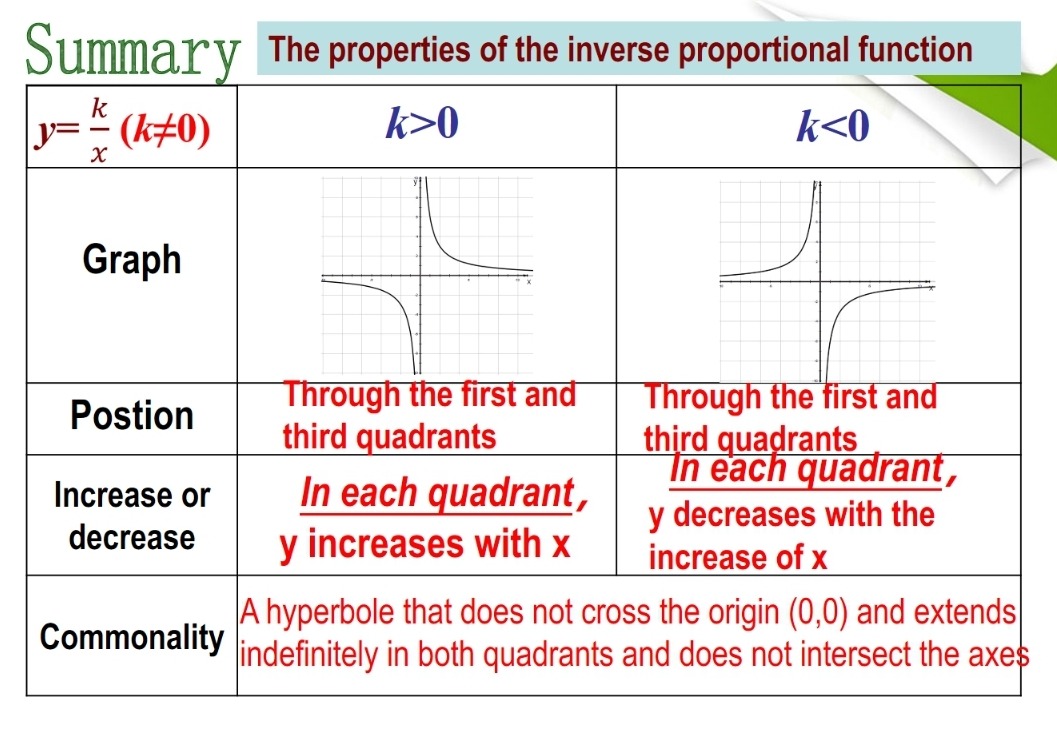
Lesson 2
Then it was my turn. I had volunteered to lead our lesson, which was looking at finding missing angles in a triangle. We had been told the students hadn’t studied it before, but it seemed like some of them had some prior knowledge. We used the opportunity to show some of the different types of activity we might use in the UK, as well as giving the students more of an opportunity to practice in lesson.
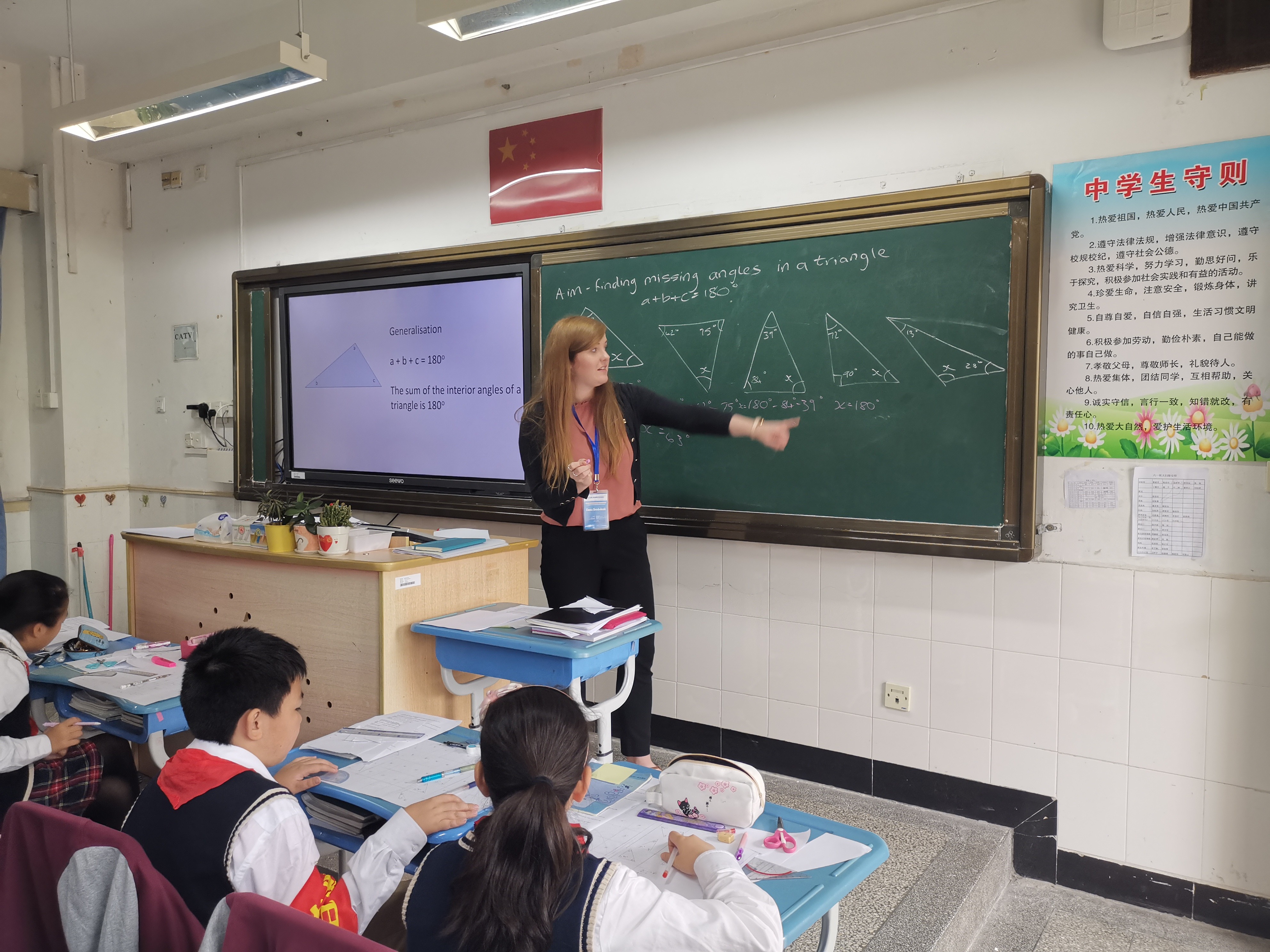
One thing we have noticed however, is that students in Shanghai do get the opportunity to have a go at some questions in lesson, and they do complete different types of activity, it varies from teacher to teacher just like it does in the UK.
We began by specifically defining a triangle, it needs to have 3 straight sides, joined together to create three angles. We did a true or false activity to elicit this precise definition out of the students. Their English was fantastic and they were able to answer most questions, and tell us why. I had prepared a sheet of instructions beforehand that the students had on their desk in Chinese to help. We then looked at measuring angles and discovering what they totalled, before getting them to all create a triangle, label the corners and create a straight line (they all knew angles on a straight line totalled 180o).
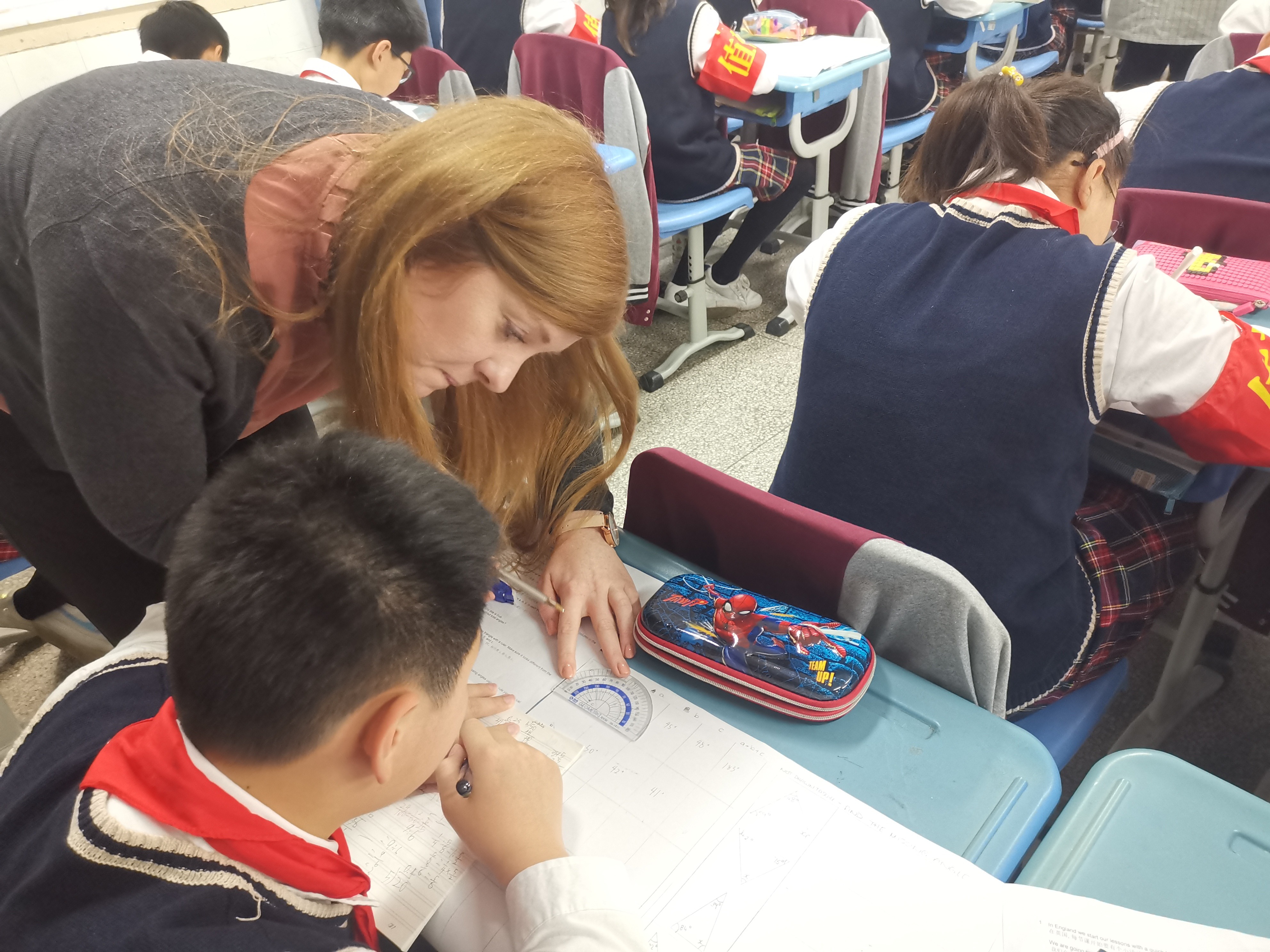
From then, they had a go at some questions to find the missing angle, we marked them together (in my school, students mark with purple pen so I explained that, and they were quite excited about the idea of marking their own – some went straight for the red pen like their teachers!), and finally we used 3 multiple choice questions on a post-it note, which required students to apply their knowledge, and they came to the front to stick them on the board so we could instantly see the extent to which each student had understood the aim. They all got all of them correct!
We got feedback from the Chinese teachers, who commented that the students were all very engaged, and enjoyed the lesson, with the different activities. It prompted a discussion around engagement and fun activities within the classroom, during our afternoon research session (more about this in the next blog!).
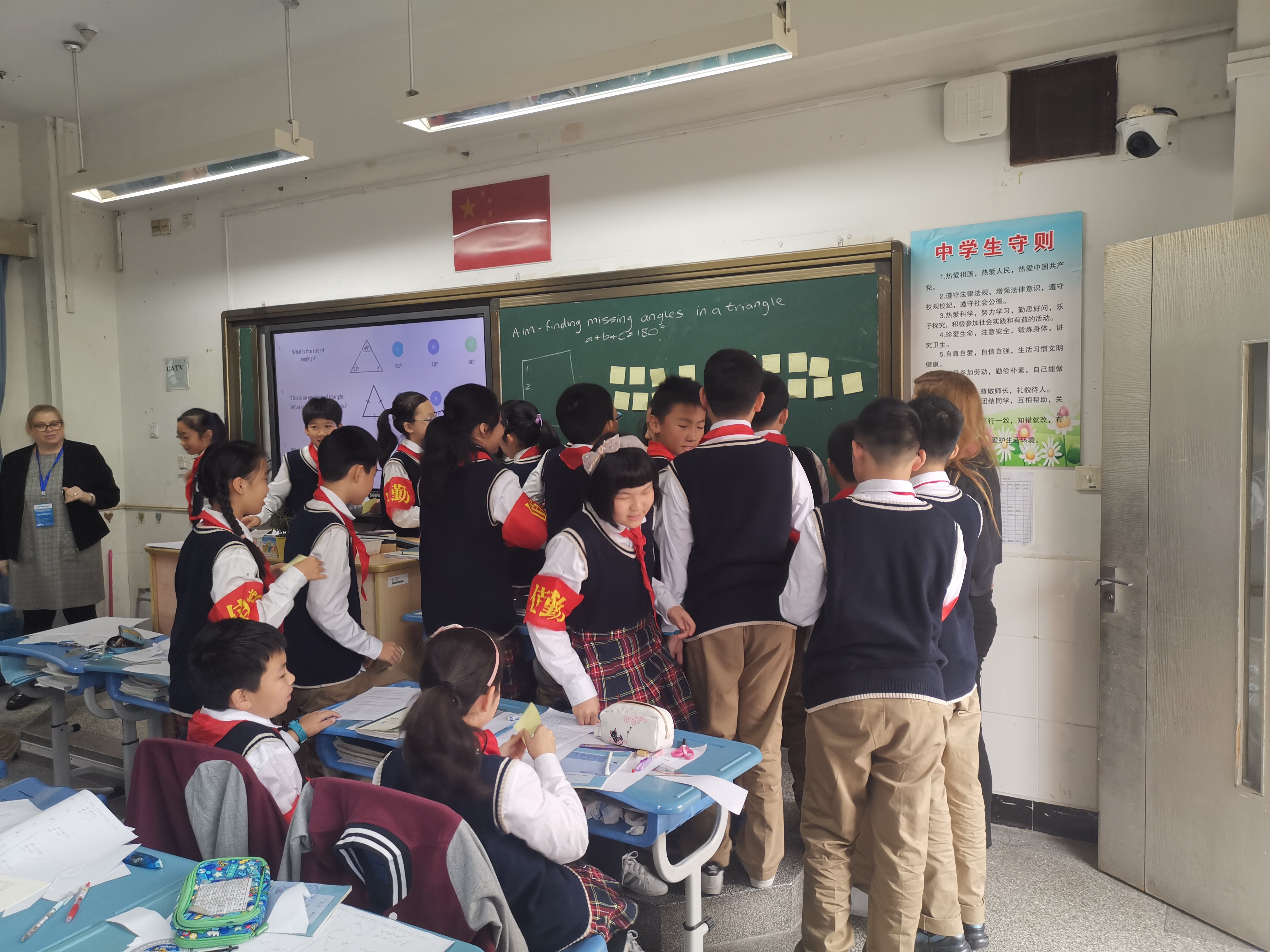
We then observed a lesson in the afternoon which was very specific, and had been included by a teacher, even though it wasn’t on their curriculum. It was to do with problem solving using area and the reciprocal graph. The key idea was if you create a rectangle from a point on the reciprocal graph and the origin, the area of that rectangle was the same as the coefficient of the reciprocal graph (See photos of summary). She talked through the generalisation and the proof. It looked so difficult, but again the concept was really simple. The questions she then used, involved just using that single fact, but the surface of the problem looked very difficult.
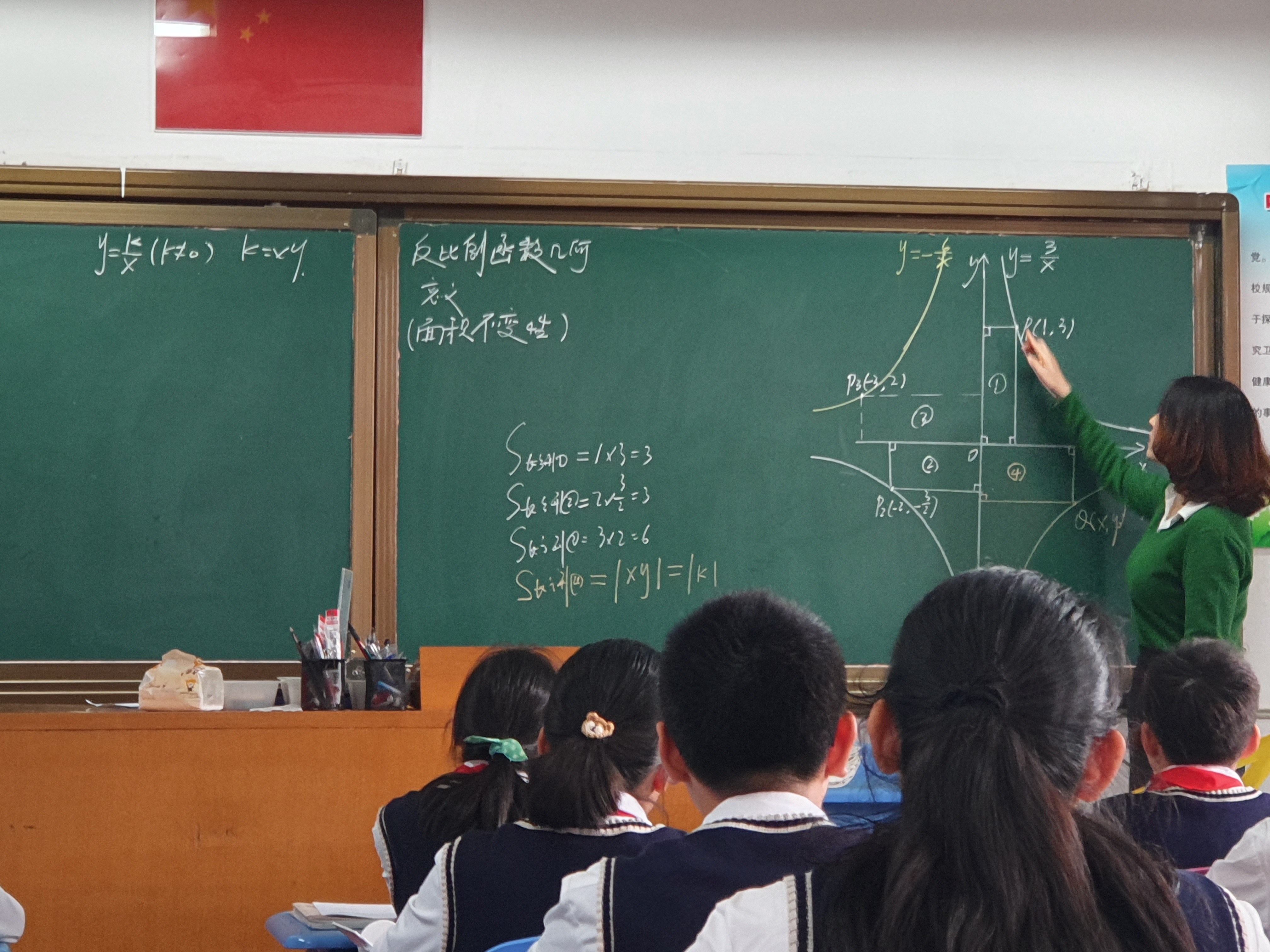
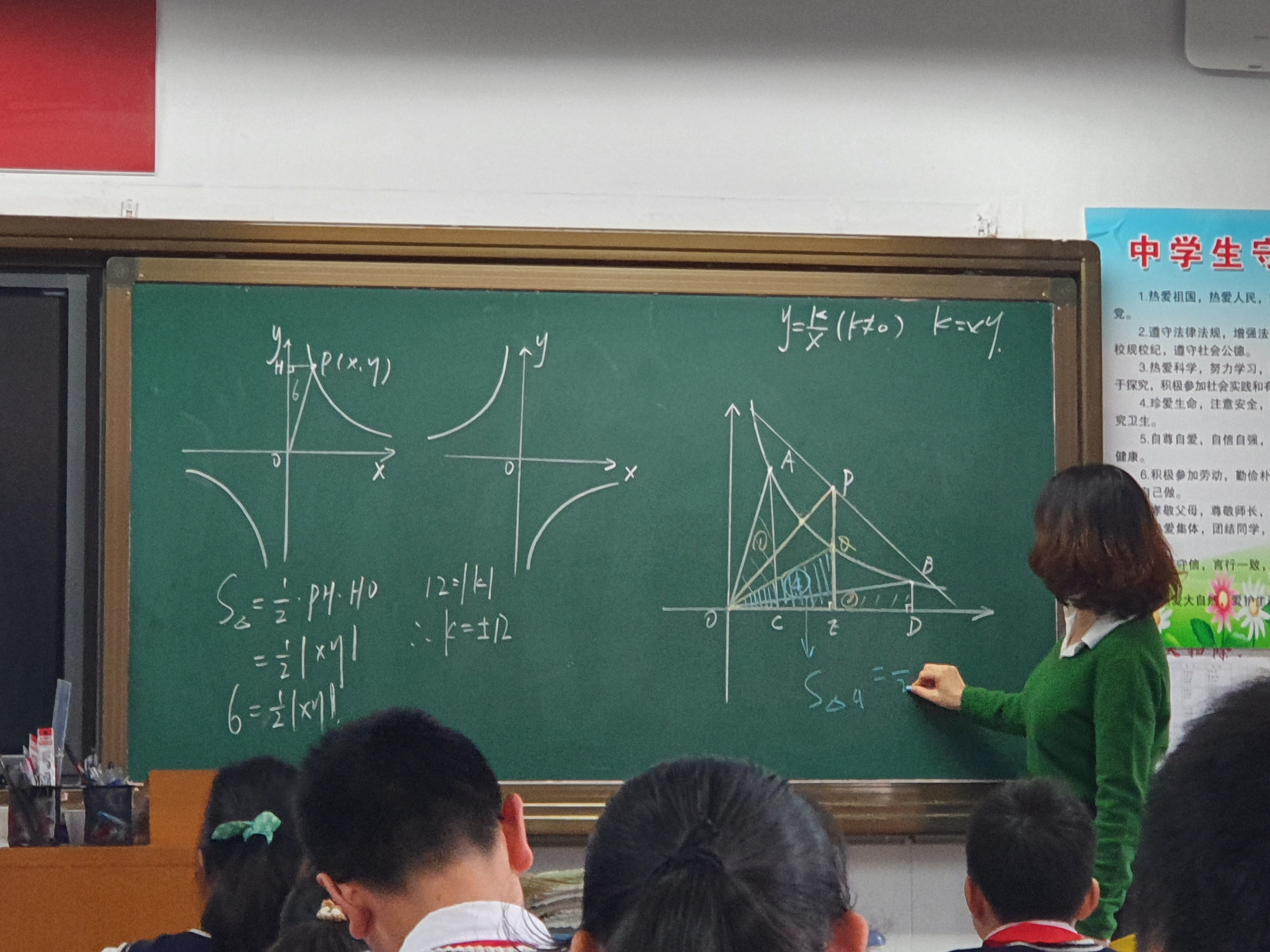
I think what we have taken away from today is that algebra and number are so ingrained into the students mathematical processes, that it becomes second nature to them. In an evening we all sit down and discuss our findings from the day, and we all have so many ideas of how we can begin to implement things back at home, to suit our context, and we can’t wait to get back to share everything with you all.
